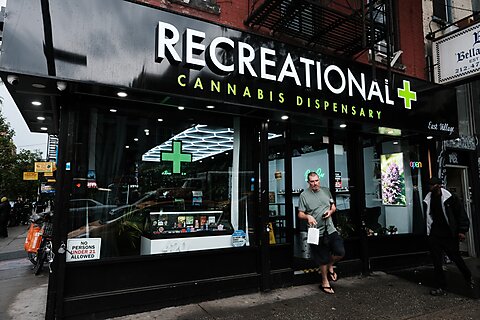Jeffrey A. Singer
Yesterday, Ohio voters approved Issue 2, which legalizes recreational marijuana, by a decisive 57 to 43 percent vote. Issue 2 allows adults aged 21 and older to possess up to 2.5 ounces of marijuana publicly and to grow up to six plants at home. Ohio is set to become the 24th state to legalize recreational marijuana. Thirty‐eight states (including Ohio) and the District of Columbia have already legalized medicinal marijuana.
One potential fly in the ointment is that Issue 2 was a voter‐initiated state statute, not a constitutional amendment. Therefore, under Ohio law, state legislators may rewrite or override much of the new statute.
Another potential problem is that the new statute imposes a 10 percent state excise tax on marijuana sales in addition to the state and local sales taxes, which will still apply. Ohio state and local sales taxes average around 7.24 percent. This means that people shopping at legal marijuana retailers may pay more than 17 percent tax on purchases.
Experience in California and other states that have legalized possessing and using marijuana should teach policymakers that overtaxing retail marijuana only serves to preserve the pre‐legalization black market, as marijuana consumers who no longer fear arrest and punishment will pay less if they buy the weed from underground dealers.
Uruguay was the first country in the world to legalize marijuana production, sale, and consumption. Several European countries have decriminalized marijuana, and a number of European countries are contemplating legalizing it.
Now that the majority of the US population lives in jurisdictions that have legalized recreational marijuana use, it is long past due for Congress to act. Congress should pass federal legislation that makes growing, processing, transporting, selling, and using marijuana legal and leaves it up to states to decide on marijuana’s legal status for medicinal or recreational use within their borders.
But federally legalizing marijuana while it remains on the Drug Enforcement Administration’s schedule of controlled substances doesn’t go far enough. The DEA currently categorizes marijuana as a Schedule 1 drug: “no currently accepted medical use and high potential for abuse.” If the DEA re‐scheduled marijuana to one of the remaining schedules (2 through 5), the plant would remain a controlled substance, requiring a prescription from DEA‐licensed health care practitioners, whose prescribing patterns would be closely monitored and regulated by law enforcement.
Congress should require the DEA to de‐schedule marijuana, i.e., remove it from the schedule of controlled substances. Alcohol, a much more potent and potentially harmful drug, is not on the DEA schedule of controlled substances. Neither should marijuana be. De‐scheduling marijuana will also make it easier to do clinical research on the plant’s medicinal uses.
Surveys show bipartisan support for legalizing marijuana. A recent Gallup poll found overall support at 70 percent (87 percent of Democrats, 69 percent of Independents, and 55 percent of Republicans). As is often the case, the people are way ahead of the politicians. It’s time for leaders in Washington to jump out to the front of the parade line and wave the banner for marijuana legalization.

